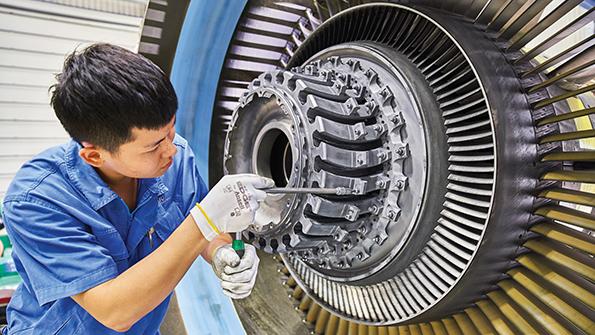
Production of the CFM56 engine may have started winding down over the past two years with the final Boeing 737NG and Airbus A320ceo aircraft deliveries, but the narrowbody engine stalwart will remain a dominant part of the global fleet for many years to come. That is because it is widely expected that any eventual commercial air traffic recovery post-COVID-19 will be driven by narrowbody aircraft.
As of May 2021, around 16,000 CFM56 engines were in service, according to CFM International. Nearly all of these are the -5B and -7B variants. Powering the A320 family and 737 family respectively, these two engine types account for around 98% of the active CFM56 fleet, according to Aviation Week’s Fleet & MRO Forecast data.
CFM International has a 44% overall engine market share this year, with the CFM56 family accounting for 85% of this (the remainder are Leap engines). However, as its Leap successor further penetrates the market, this will gradually decline over the decade. By 2030, the CFM56 will account for 45% of all CFM engines, while the Leap will hold the majority, with 55%.
Naturally, the CFM56’s existing market dominance will be manifest in the largest share of MRO spending over the next few years, according to Aviation Week data. In 2021, maintenance on the engine is valued at around $21 billion, accounting for 70% of overall engine MRO spending this year. This will climb gradually before peaking in 2024 at $24.5 billion before the impact of Leap service entries will reduce MRO spending on the CFM56.
In the wake of the pandemic, a widely held belief has been that airlines could utilize existing assets and short-term leases. However, this activity did not pick up as anticipated in 2020, according to CFM International partner Safran, overseer of the joint venture with GE Aviation, which also reported stability in its workscopes.
This stability was also reflected in the pricing of CFM56 engines. Consultancy IBA International said in late 2020 that a CFM56 engine powering an Airbus A320 manufactured in 1999 lost just 10% of its value last year, citing OEM price inflation and regular reinvestment as factors.
After seeing an overall reduction in shop visits last year, Safran’s chief executive Olivier Andries stated in a March 2021 earnings call that the OEM anticipates an increase of around 15% in shop visits this year. He also foresees a similar but smaller impact from green-time engines expected during that period.
Post-COVID-19, a CFM56 retirement wave is not immediately anticipated. Aviation Week forecast data estimates 124 retirements of the CFM56-7B this year, a figure that will decline in 2022 before gradually climbing once more. Retirements of the -5B variant are not expected to increase significantly until 2025.
The program’s expected longevity has led MRO providers to add new services. Before COVID-19 in 2019, CFM estimated more than 40 shops—including third-party providers, along with the MRO units of GE Aviation and Safran—provided CFM56 engine overhauls. The OEM estimated that about two-thirds of worldwide shop visits are being completed by non-CFM shops.
As the OEM ramps up its Leap aftermarket network, more independents are seeking to provide new services related to engines such as the CFM56. One trend has been the introduction of lighter, quick-turn services aimed at repairing engines on wing. This capability has been particularly popular for independent maintenance specialists. In Europe, Magnetic MRO and FL Technics have introduced this service during the past 12 months by forming specialist engine businesses, while in Australia, Heston MRO introduced similar services during the pandemic.
Other existing CFM56 MRO providers are adding Leap services to deal with anticipated capacity challenges. These include UK-based independent shop GT Engine Services (GTES), which added capabilities for Leap 1A and 1B engines earlier this year.
The CFM56 remains integral to the company’s future strategy as it anticipates a wave of engine shop visits for the model, says Greg Macleod, GTES’ managing director. “We see the CFM56-5B and -7B as an important part of our business plan going forward, and have invested heavily over the last few years and see ourselves ideally positioned to continue operating these efficiently and where we can negate the need for major shop visits,” he says.
